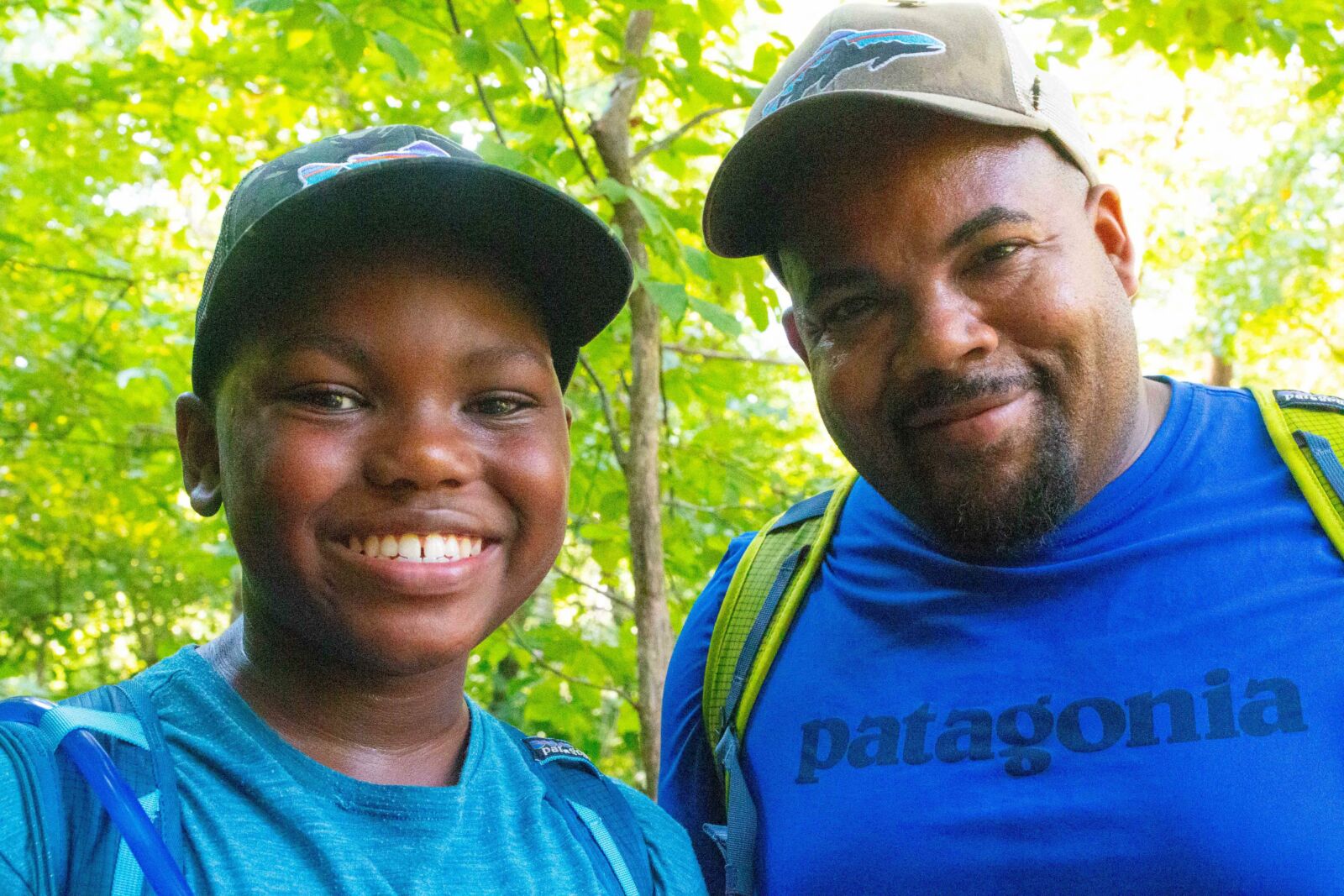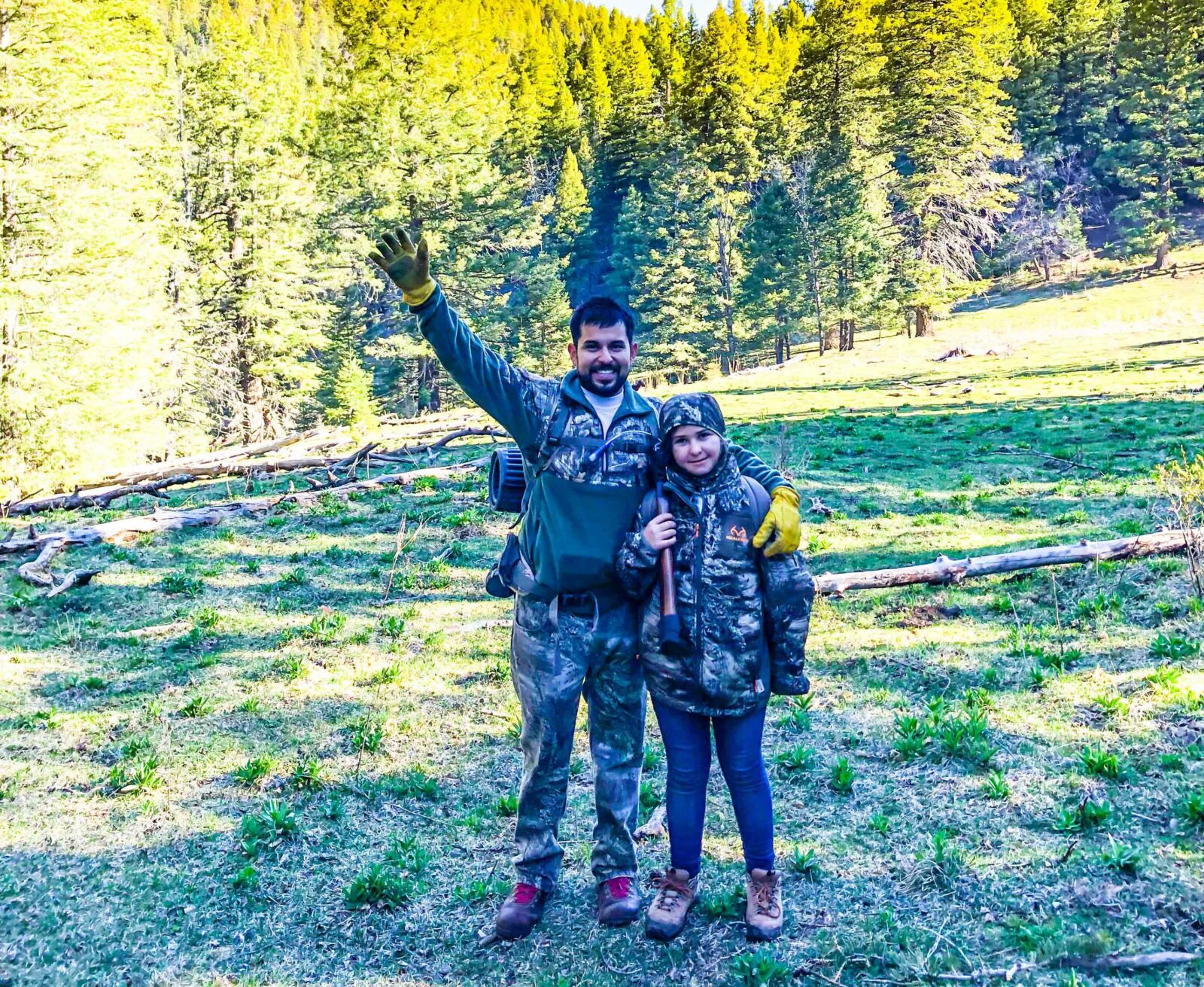Nick Brooks never misses a chance take his 12-year old son Preston on day hikes and camping trips in the Chattahoochee National Forest near their home in Decatur, Georgia.
“I remember for his fourth birthday, I asked him what kind of party he wanted to have,” said Brooks, a public-school teacher and Boy Scout leader who grew up spending time outside with his own father. “I expected him to say something like Blue’s Clues or Spiderman … but he said, ‘I want to go backpacking just like you, Dad.’ I just about lost it. He was 4!”
Only a few hours’ drive from their home near the city of Atlanta, the Chattahoochee is a 750,000-acre expanse of pine and hardwood forest, free-flowing freshwater and scenic beauty in the North Georgia Mountains. As a toddler, Preston watched Brooks sort and pack his hiking gear before heading out into these wilds, and listened with excitement to the stories his dad told when he returned. So, for his fourth birthday, they took their first backpacking trip together to Raven Cliff Falls.
“It was really cool hiking to the waterfall and camping along the creek at night. That night we made a spaghetti dinner. The next morning, we had our oatmeal, and we cleaned it up like nobody had been there, and hiked out.”
The ease and accessibility of camping in a National Forest can hardly be understated. Over 193 million acres of public forests and grasslands across the country are open for recreational use for a nominal fee or free. The U.S. Forest Service maintains more than 158,000 miles of paved and dirt hiking trails at sites from coast to coast, many accessed from well-established roads. Seven out of 10 Americans live within a two-hour drive of a National Forest.
Raven Cliff Falls, where the Brooks camped, is a moderate 2.5-mile hike from the Richard Russell Scenic Highway. But nestled as it is in the heart of a designated wilderness area, some visitors might not realize it’s even there. The campsites are free, and there’s a $5 charge to park at the trailhead.

Photo by James Edward Mills
Nick Brooks and his son Preston.
A wide variety of accessible camping options makes National Forests an ideal place to begin establishing a positive relationship with the natural world. For families and communities with limited experience outside, these campsites and hiking trails make it possible to have a low-impact wilderness experience that’s close to home.
“Roadside highway camping can be a gateway to some pretty unique stuff,” said Ricardo Martinez, a New Mexico-based outreach specialist for the U.S. Forest Service Office of Civil
Rights, referring to a style of camping where people set up camp near their vehicles, and then explore from there. “[It’s] not a bad way to set up a launch site as an access point for people who don’t exactly do this as a way of life.”
A first-generation American citizen, Angel Peña regularly camps overnight in the Gila National Forest with his 11-year-old daughter Gabriella. Not far from their home in Las Cruces, New Mexico, they are learning the art of hunting on public land.
“I didn’t grow up with access to the outdoors. So, I’m just making it up as I go along.”
Over the last few years they’ve become proficient hunters. Though Gabriella hates getting up early, she rallies in the morning to stalk wild turkey and mule deer—as long as her dad provides hot cocoa and cinnamon rolls. “Once she’s out there, she complains a whole bunch,” Peña said, “but as soon as she hears the turkey gobble, the 28-degree weather, her hunger, hiking too far and her complaining all just disappear.”

Photo by Angel Peña
Angel Peña and his daughter Gabriella.
Hunting in-season on public land requires annual license fees and the cost of gear, but otherwise, wilderness areas like the Gila and other National Forests are free of charge and open to everyone. These experiences in the outdoors help forge an enduring bond of stewardship with the natural world that can last for generations, passed down from one to the next.
“When I’m out there, it’s not really about the harvest,” Peña said. “It’s me and her figuring it out at the exact same time together. That’s super exciting. When we’re out there, cold and wet and hungry, it’s OK to just dive into this adventure.”
The U.S. Forest Service is working to make public land more accessible to a broader cross-section of the American people. At his office in New Mexico, Martinez said there is a growing push to publish informational brochures and signage in Spanish and other languages to remove cultural barriers that limit access.
Judy Toppins, the public affairs officer at the Chattahoochee National Forest in Georgia, said her office is eager to provide positive outdoor experiences for every community her region serves.
“We know that there are huge physical, emotional, intellectual and spiritual benefits to time spent in the outdoors, and every child, every adult deserves that experience,” Toppins said. “Every person has a right to it.”
About the author
James Edward Mills is a freelance journalist who specializes in stories about outdoor recreation, environmental conservation, acts of charitable giving and sustainable living. He authored the book “The Adventure Gap: Changing the Face of the Outdoors” and the co-wrote/co-produced the documentary film “An American Ascent.” Find him at joytripproject.com.

